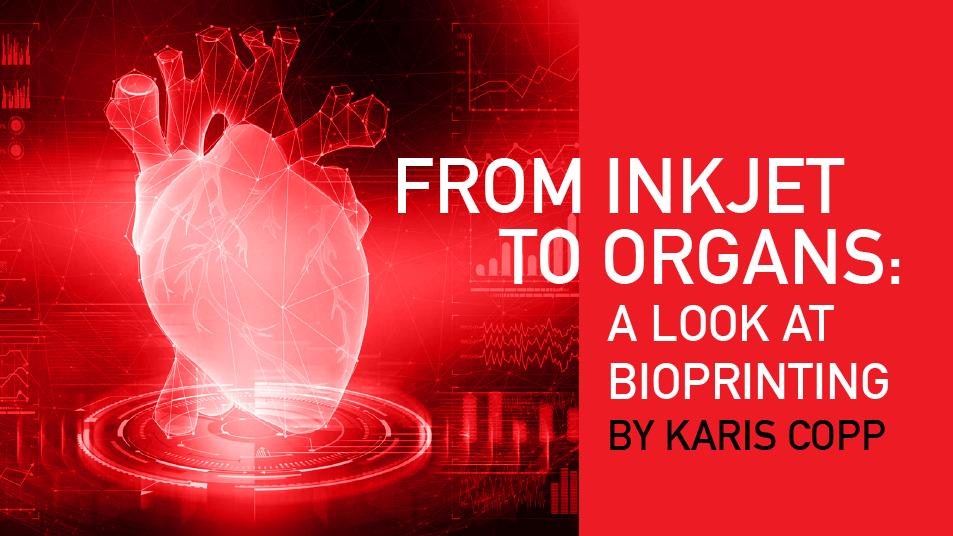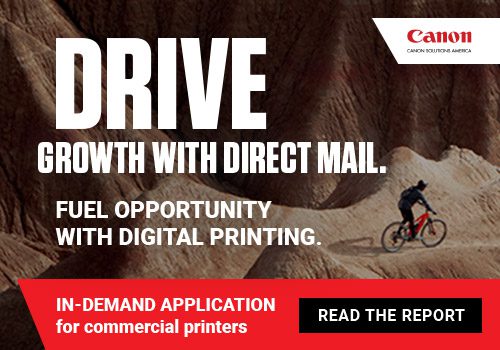As I write this, I can’t help but feel a little sad. Instead of packing up my comfiest footwear and getting ready to stomp the halls of Messe Dusseldorf, I remain stuck at home, only able to interact with industry peers through a screen. No witnessing new technology launches. No beer hall debriefs with friends and colleagues. No currywurst!

I was so excited to be a part of PMC’s Printerverse at drupa, set to take place alongside many forward-thinking, innovative businesses in the drupa next age (dna) hall. dna’s ethos is all about ‘disruptive developments’ and exploring the print industry of tomorrow, so I thought it would be fitting to this month write a blog about one of the key technologies listed by drupa as a focus for dna that really interests me. With the world’s attention on medical solutions due to the continuing epidemic, I’m taking a look at bioprinting.
What is bioprinting?
Bioprinting is a form of additive manufacturing that uses biomaterials to create and imitate human tissue and organs. Using a similar method to the additive manufacturing/3D printing processes we’re familiar with, a digital model is created and the physical version is 3D printed layer-by-layer, but with bioprinting, ‘bioinks’ made up of cells and other materials such as biopolymer gels. The process is hugely useful for developing and testing pharmaceuticals on living structures, and in the long-term could be a viable way to produce parts of organs or even entire organ replacements using a patient’s own cells.
This may seem a million miles away from print as we know it, but there is a type of bioprinting, that will be more familiar. HP’s BioPrinter isn’t printing human tissue through an additive manufacturing process – instead, it is based on the same technology as inkjet printing, and is used in the testing of pharmaceuticals.
HP says it’s D300e BioPrinter ‘accurately dispenses or ‘prints’ volumes from picoliters to microliters for faster, more reliable dispensing of small molecules and biomolecules to enable drug discovery, genomics, and proteomics research’, and has apparently been deployed at no charge to NGOs, pharmaceutical companies, and government agencies in the hope of advancing coronavirus-related vaccine and drug research. Basically, instead of printing ink, it prints pharmaceutical samples.
Outside of the race to combat COVID-19, the D300e is helping in the fight against antibiotic resistance, having been used by the Centers for Diseases Control (CDC) for a while for ‘antimicrobial susceptibility testing’, which I don’t need to explain to any of you because we all obviously know what it is. It’s fascinating to think that print technology can play such a significant part in the way we test pharmaceuticals. At the moment, looking to the future can be daunting, but exciting developments and innovations in print, technology, and beyond certainly inspire hope that better days are just around the corner.
Tuan Tran, President of HP Imaging, Printing and Solutions encapsulates it well: “The CDC’s use of HP Bioprinters epitomizes the power of print – pushing the boundaries of innovation while making the world safer, cleaner and healthier for all.”
 Karis Copp is a UK-based writer, journalist, and communications expert. With a background as an editor and public relations specialist in the print industry, she now works on a freelance basis covering events, writing on industry news and trends, and working with businesses to help them tell their stories and connect with their customers. Follow her on Twitter @KarisCoppWrites.
Karis Copp is a UK-based writer, journalist, and communications expert. With a background as an editor and public relations specialist in the print industry, she now works on a freelance basis covering events, writing on industry news and trends, and working with businesses to help them tell their stories and connect with their customers. Follow her on Twitter @KarisCoppWrites.












